<< Previous | Displaying results 5326-5350 of 6769 for "" | Next >>
Gerhard and Margot's mother came from a Protestant family. She met her future husband when she went to work in the telephone exchange at his company. She converted to Judaism in 1920. The couple married in 1920, and in 1923 had their twins Gerhard and Margot. Both Gerhard and Margot would become active in Jewish youth movements, and took on Hebrew names (Gad and Miriam). On February 17, 1943, Gad was ordered to report to the temporary internment camp established at a former Jewish community building on…
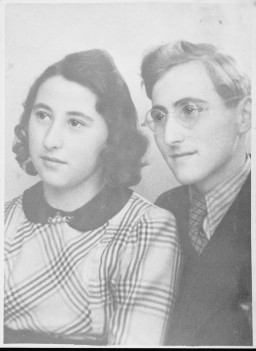
French policeman Théophile Larue, who warned his Jewish neighbors of an upcoming roundup.
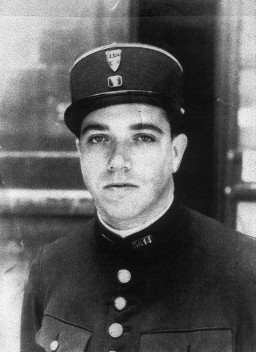
Adolf Hitler stands with an SA unit during a Nazi parade in Weimar, where the constitution of the Weimar Republic was drafted in 1919. Weimar, Germany, 1931.
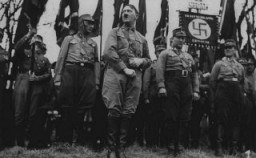
Identification picture of a prisoner, accused of homosexuality, who arrived at the Auschwitz camp on May 28, 1941. Auschwitz, Poland.
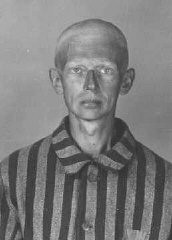
Belgium agreed to accept some of the Jewish refugee passengers of the St. Louis after Cuba and the US denied them entry. Here, Belgian police escort some of the passengers after their arrival in Antwerp. Belgium, June 17, 1939.
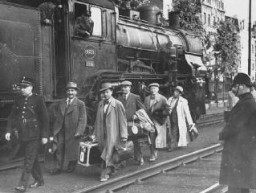
Aart Bouter, a Jehovah's Witness, was arrested by the Dutch police and deported to Sachsenhausen concentration camp. The Netherlands, 1946–47.
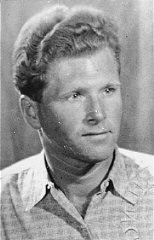
Hilda Kusserow, a Jehovah's Witness, was imprisoned for nine years for her religious beliefs. Eschborn, Germany, ca. 1979.
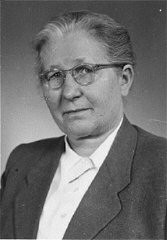
Franz Kusserow, a Jehovah's Witness, was imprisoned for nine years for his religious beliefs. Bad Lippspringe, Germany, ca. 1950.

The Kusserow family was active in their region distributing religious literature and teaching Bible study classes in their home. They were Jehovah's Witnesses. Their house was conveniently situated for fellow Jehovah's Witnesses along the tram route connecting the cities of Paderborn and Detmold. For the first three years after the Nazis came to power, the Kusserows endured moderate persecution by local Gestapo agents, who often came to search their home for religious materials. In 1936, Nazi police…
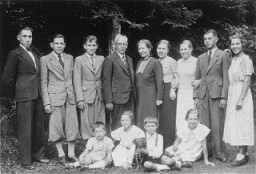
The Kusserow family home in Bad Lippspringe. The family, Jehovah's Witnesses, kept religious materials in the trunk of the car and distributed them from it as well. The Kusserow family was active in their region distributing religious literature and teaching Bible study classes in their home. Their house was conveniently situated for fellow Witnesses along the tram route connecting the cities of Paderborn and Detmold. For the first three years after the Nazis came to power, the Kusserows endured moderate…
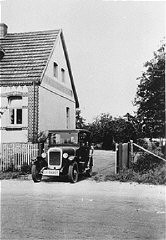
This photograph shows the Kusserow family home in Bad Lippspringe and the tram tracks in front of it. The Kusserow family members were active Jehovah's Witnesses in their region. They distributed religious literature and taught Bible study classes in their home. Their house was conveniently situated for fellow Witnesses along the tram route connecting the cities of Paderborn and Detmold. For the first three years after the Nazis came to power, the Kusserows endured moderate persecution by local Gestapo…
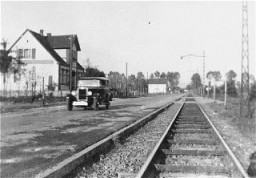
Elisabeth, Hans Werner, and Paul Gerhard Kusserow. Because they were the children of Jehovah's Witnesses, all three were forcibly removed from school on March 7, 1939, and kept separated from their family, which was accused of spiritual and moral neglect, until their liberation in April 1945. This photograph was taken at the Kusserow home in Bad Lippspringe, 1936-1939.
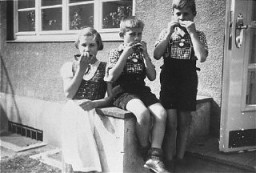
A group of Jehovah's Witnesses in their camp uniforms after liberation. These men were imprisoned in the Niederhagen bei Wewelsburg concentration camp. Niederhagen bei Wewelsbug, Germany, 1945.
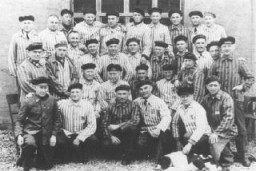
Two Roma (Gypsies) photographed near Craiova. Romania, probably early 1930s.
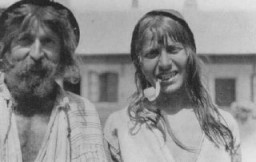
Romani (Gypsy) family near Craiova. Romania, probably 1930s.
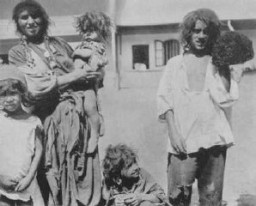
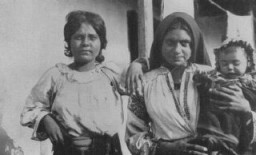
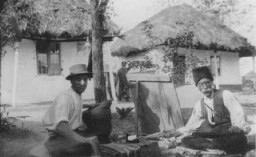
Portrait of two Romani (Gypsy) women. Both were deported to Auschwitz in 1941. Photograph taken in Czechoslovakia, 1937.
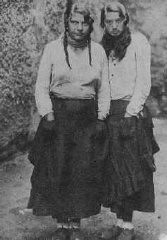
Roma (Gypsies) near Uzhgorod in 1938, including the group's chief (standing second from left).
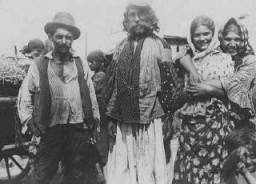
A family of nomadic Roma (Gypsies) in front of their wagon. Czechoslovakia, 1939.
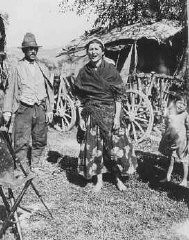
Photographer J. Kolarcik sits with a group of nomadic Roma (Gypsies). This photograph was probably taken in Czechoslovakia, 1939.
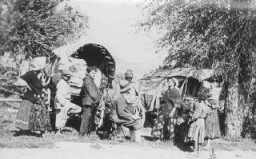
During the Warsaw ghetto uprising, German soldiers round up Jews in factories for deportation. Warsaw ghetto, Poland, April or May 1943.

Deportation of Jews from the Warsaw ghetto during the uprising. This photo was taken secretly from a building adjacent to the ghetto by a Polish member of the resistance. Warsaw, Poland, April 1943.
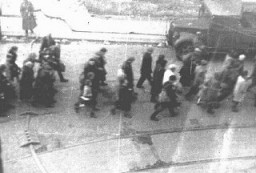
Deportation of Jews from the Warsaw ghetto during the uprising. This photo was taken secretly from a building adjacent to the ghetto by a Polish member of the resistance. Warsaw, Poland, April 1943.
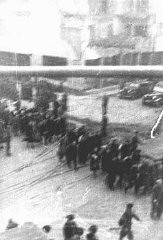
Deportation of Jews from the Warsaw ghetto during the uprising. The photograph was taken from a building opposite the ghetto by a member of the resistance. It shows Jews who were captured by the SS during the suppression of the Warsaw ghetto uprising marching past the St. Zofia hospital, through the intersection of Nowolipie and Zelasna Streets, towards the Umschlagplatz for deportation. Warsaw, Poland, April 20, 1943.
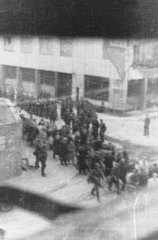
We would like to thank Crown Family Philanthropies, Abe and Ida Cooper Foundation, the Claims Conference, EVZ, and BMF for supporting the ongoing work to create content and resources for the Holocaust Encyclopedia. View the list of donor acknowledgement.